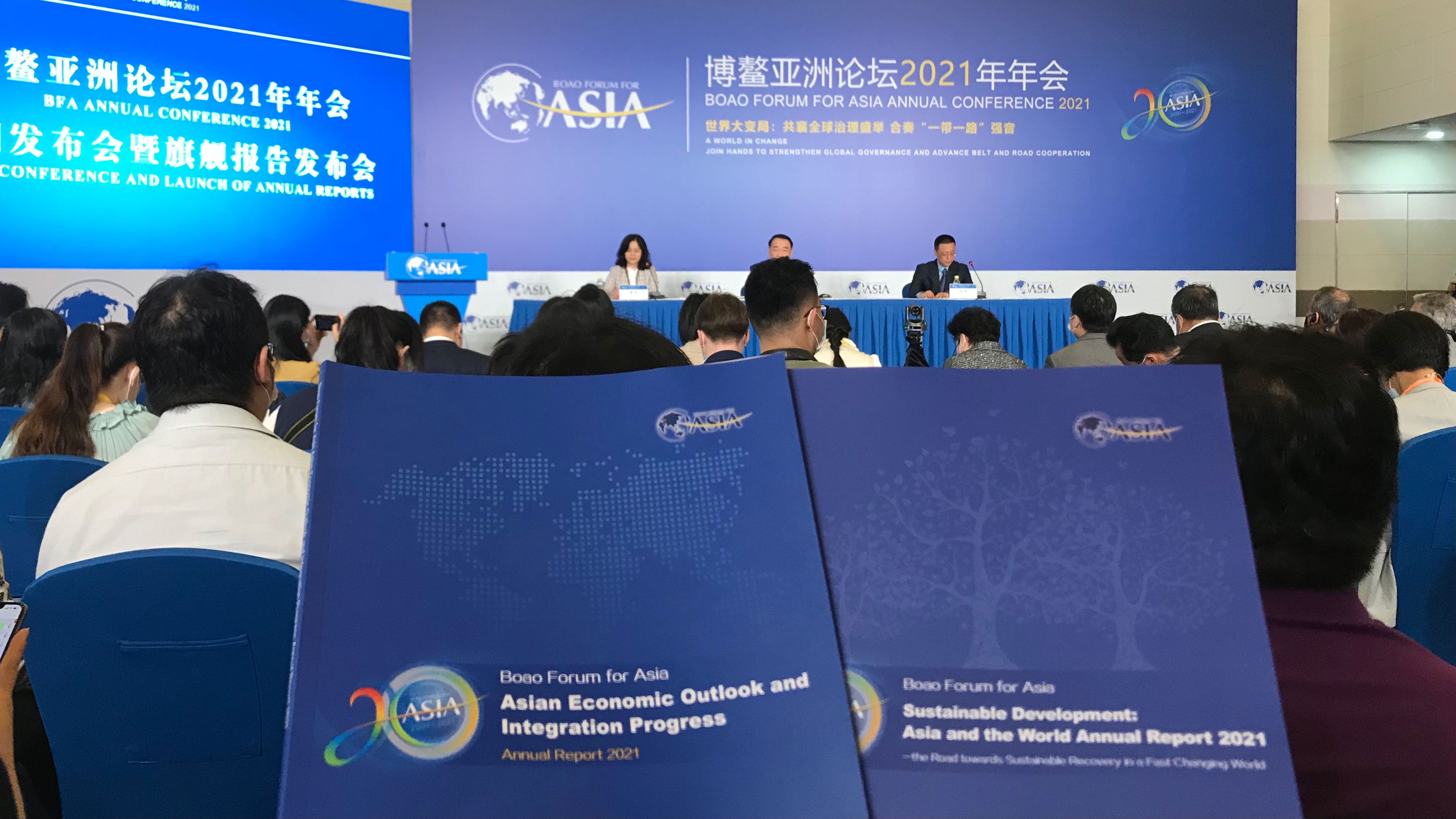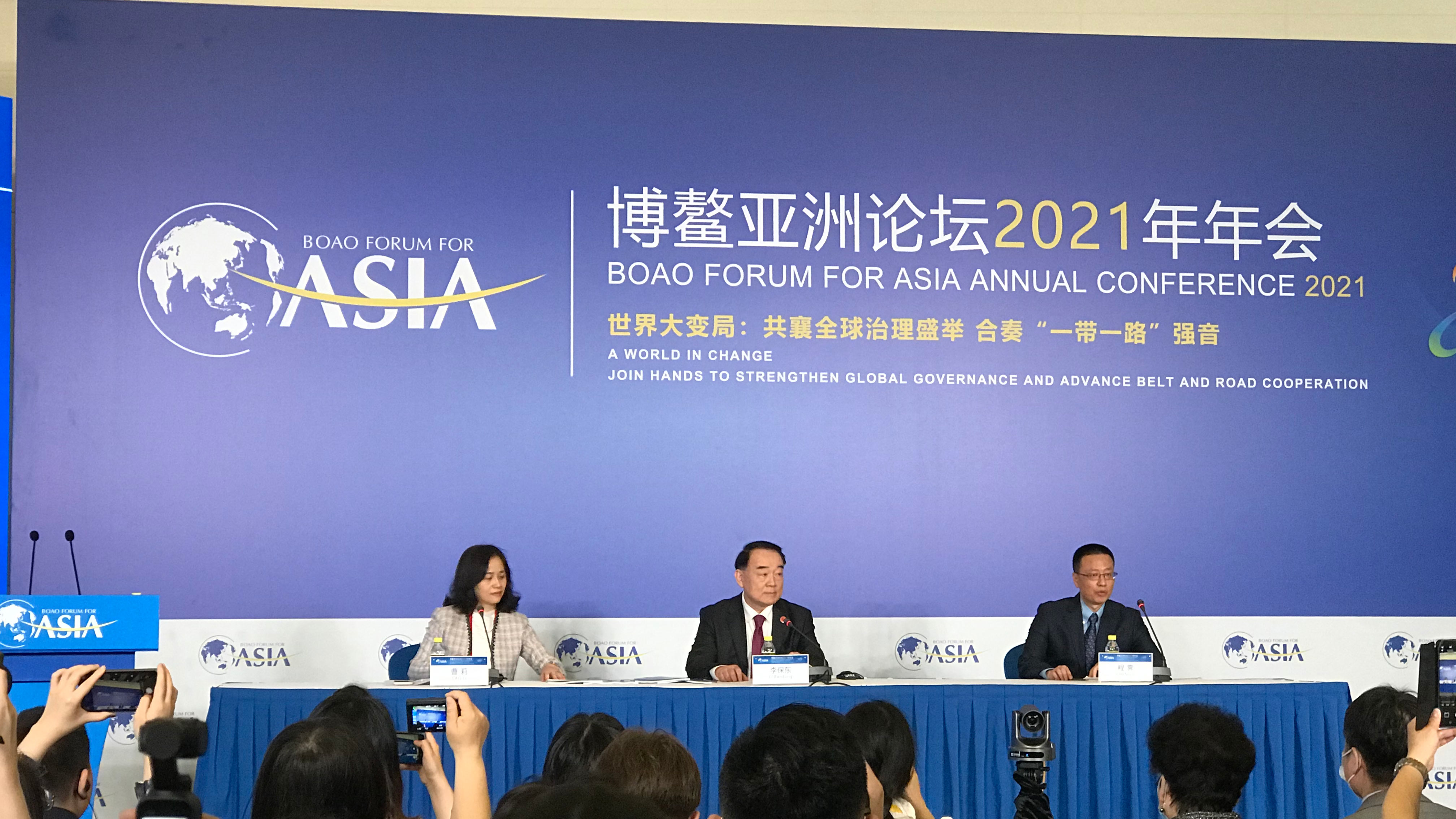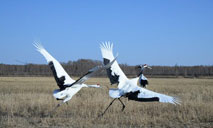Asian economies should brace for opportunities and handle deficits: Boao annual reports

Boao Forum for Asia publishes two annual reports, in Boao, south China's Hainan Province, April 18, 2021. Wang Tianyu/CGTN
Despite being hard hit by COVID-19, Asia's economies have recovered well compared to the rest of the world. However there remain challenges in maintaining sustainable development, according to two reports released by the Boao Forum for Asia (BFA) on Sunday.
In 2020, the economic growth rate of Asian economies dropped 1.7 percent, down 5.7 percent from 2019, 3 percent higher than that of advanced economies. But the Asian economy will experience recovery growth in 2021, with a growth rate of more than 6.5 percent, according to the 2021 Asian Economic Outlook and Integration Process annual report.
The economic contraction has reduced trade and cross-border investment, caused changes in commodity prices, and the overall debt level of Asian economies has further risen.

Boao Forum for Asia annual conference 2021 opens in Boao, south China's Hainan Province, April 18, 2021. Wang Tianyu/CGTN
"Most Asian economies experienced moderate inflation in 2020, while Japan fell into deflation.""Public debt to GDP ratios of Maldives, Japan and Bahrain have increased by 40.3 percent, 28.2 percent, and 24.9 percent respectively over the previous year," the report said.
"Last year, Asia's economies recorded negative growth for the first time in 60 years, but it is overall better than the rest of the world," Zhang Yuyan, director of Institute of World Economics and Politics, Chinese Academy of Social Sciences, said at a press conference on Sunday.
"In terms of foreign direct investment (FDI), Asia stands out. Asia's FDI registered $476 billion in 2020, dropping by 4 percent from the previous year, compared to the drop of 42 percent in global foreign direct investment," Zhang said.
China grows against the trend
Asia's largest economy China took the lead with a growth rate of 2.3 percent in 2020. In the first quarter of 2021, China's economy grew by 18.3 percent year-on-year, the economic outlook report said.
Trade in goods in China has grown against the trend. Customs data showed the country's total import and export of goods reached $4.65 trillion in 2020, ranking first in the world, up 1.5 percent over 2019.

Lin Guijun, executive dean of the Academy of China Open Economy Studies of the University of International Business and Economics, speaks at the Boao Forum for Asia annual conference 2021 in Boao, south China's Hainan Province, April 18, 2021. Wang Tianyu/CGTN
Highlights and opportunities
The pandemic ushered in new opportunities in the digital economy, and has spurred new momentum for driving Asia's economic growth in the future, according to the economic outlook report.
The signing of the Regional Comprehensive Economic Partnership Agreement (RCEP) in November 2020, and the high-quality pursuit of the Belt and Road Initiative are injecting strong momentum into the regional and global economic growth, stated the report.
"The most important thing for RCEP is not trade, but to strengthen the position of Asia's value chains in the world. China and ASEAN are firmly at the center of trade in goods," Lin Guijun, executive dean of the Academy of China Open Economy Studies of the University of International Business and Economics, said at the conference.
Integration of trade in goods in Asia continued to be advanced, and the demand growth rate in Asian economies' service industries were higher than that for goods.
Four deficits to be addressed
Healthcare, infrastructure, green transformation and digital deficits are a bottleneck to sustainable recovery in Asia. Governments should prioritize narrowing these four deficits with synergized efforts, thus releasing growth potential and helping realize multiple sustainable development goals, wrote the 2021 annual report on sustainable development in Asia and the world.
For example, in terms of the health care deficit, the report called for improving access, fairness, and responsiveness of the health care system, invest more in public health infrastructure, strengthen the reserve dealing with public health emergencies, said the sustainable development report.
In terms of infrastructure, the report focused on building infrastructure targeting dealing with environmental risks and climate change, and enhancing investment in digital infrastructures. The newly signed RCEP should seize the advantages of new technologies and business models like e-commerce and automation.
The report lauded announcements made last year by leaders of China, Japan, South Korea, and other Asian economies on carbon neutrality. However, it called for concrete blueprints in industry transformation, technology advancement, and finance adaptation and mitigation to mitigate a green deficit, said the report.
In addition, the report called for the acceleration of digital transformation to narrow down the digital gap among Asian economies, which it called one of the biggest challenges faced by Asia. Countries should push social governance and city construction towards intelligence and digitalization, said the report.
The two reports were released on the first day of the Boao Forum for Asia annual conference, which will run until April 21 in Boao in south China's Hainan Province.
Photos
Related Stories
- BFA's annual conference scheduled for April 18 to 21 in Boao
- BFA report calls for strengthened free trade ties among Asian economies
- Qingdao to host 2nd Global Health Forum of Boao Forum for Asia
- At this year's BFA, Chinese wisdom promotes building of Asian community with shared future
- Intelligent Connected Vehicles tested during BFA Annual Conference
- BFA Board of Directors Meeting held in Hainan
- BFA session: "A Conversation with University Presidents: When East Meets West"
- BFA session: "5G: Bringing Things to Life with the IoT"
- In Boao, China adds certainty to global prosperity
- Integration to bolster Asia's competitiveness
Copyright © 2021 People's Daily Online. All Rights Reserved.










